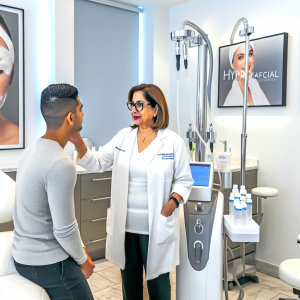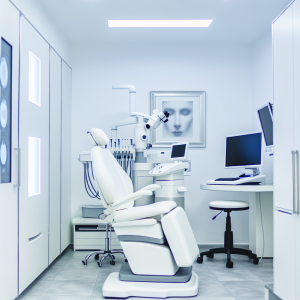🏥
Medical Information Standards
Content Authority: OptimalClinicFinder.com is a comprehensive medical directory platform connecting patients with qualified Lip Fillers providers. Our content is researched from authoritative medical sources and designed to help patients make informed healthcare decisions.
How Lip Fillers Work: Clinical Mechanism and Applications
Lip fillers work by introducing biocompatible substances, primarily hyaluronic acid, into the lip tissue to restore volume, enhance shape, and improve definition. Hyaluronic acid is a naturally occurring substance in the body that attracts and retains moisture, making it ideal for creating natural-looking lip enhancement. When injected by skilled practitioners, these fillers integrate with existing tissue to provide immediate volume while stimulating natural collagen production over time.
The injection process involves strategic placement of filler material in specific anatomical zones of the lips, including the vermillion border, cupid’s bow, and body of the lips. Advanced injection techniques such as the linear threading method, serial puncture technique, and cross-hatching patterns allow practitioners to achieve customized results based on individual facial anatomy and aesthetic goals. The reversible nature of hyaluronic acid fillers provides an additional safety advantage, as treatments can be modified or completely reversed using hyaluronidase enzyme if needed.
💡
Did You Know?
Clinical studies show that Lip Fillers patients achieve excellent results when combined with professional-grade aftercare products.
Clinical Research and Evidence Base
The clinical development of modern lip fillers has involved extensive research spanning over two decades. Pivotal clinical trials for major hyaluronic acid filler brands have enrolled thousands of participants and followed patients for up to 12 months post-treatment. These studies consistently demonstrate high satisfaction rates, with over 90% of patients reporting satisfaction with their lip enhancement results at 6-month follow-up appointments.
Long-term safety data from post-marketing surveillance studies involving over 50,000 treatment sessions show that serious adverse events are rare when procedures are performed by qualified practitioners. The most comprehensive safety analysis published in the Journal of Cosmetic Dermatology found that the overall complication rate for lip filler procedures is less than 1% when proper injection techniques and sterile protocols are followed. Research also demonstrates that patient satisfaction correlates strongly with provider experience and adherence to established injection protocols.
Treatment Protocols and Clinical Management
Successful lip filler treatment begins with comprehensive patient consultation and assessment. The evaluation process includes detailed medical history, assessment of facial anatomy, discussion of realistic expectations, and photographic documentation for treatment planning. Practitioners must evaluate lip proportions, facial symmetry, and existing volume to develop individualized treatment approaches that enhance natural beauty rather than creating artificial-looking results.
Standard treatment protocols involve graduated approaches for first-time patients, typically starting with conservative volume enhancement that can be built upon in subsequent sessions. Most treatments require 0.5-1.0 mL of filler per session, administered using techniques that minimize discomfort and optimize natural-looking results. Post-treatment care includes ice application, activity restrictions for 24-48 hours, and follow-up appointments to assess healing and results. Touch-up treatments may be recommended 2-4 weeks post-treatment to optimize symmetry and address any areas requiring additional enhancement.
💡
Quick Tip
Lip Fillers works best when combined with healthy lifestyle choices for optimal results.
Safety Profile and Risk Management
The safety profile of lip fillers is well-established through extensive clinical use and ongoing safety monitoring. Common temporary side effects include swelling, bruising, tenderness, and mild asymmetry, which typically resolve within 3-7 days post-treatment. These effects can be minimized through proper injection technique, pre-treatment preparation including avoidance of blood-thinning medications, and appropriate post-treatment care protocols.
Serious complications are rare but can include vascular occlusion, granuloma formation, or severe allergic reactions. Risk factors for complications include treatment by unqualified practitioners, use of non-FDA approved products, and failure to follow sterile injection protocols. Board-certified practitioners maintain emergency protocols including immediate access to hyaluronidase enzyme for vascular complications and established relationships with emergency medical facilities for managing serious adverse events. Patient education about warning signs and clear post-treatment communication protocols are essential components of safe treatment delivery.
Cost Analysis and Value Considerations
The cost of lip filler treatments varies significantly based on geographic location, provider qualifications, product selection, and clinic overhead costs. Metropolitan areas typically command premium pricing due to higher operational costs and increased demand, while smaller markets may offer more competitive pricing. However, patients should prioritize provider qualifications and safety protocols over cost savings when selecting treatment providers.
⚠️
Safety First
Always consult a qualified medical professional before starting Lip Fillers. Results vary by individual.
Treatment value extends beyond initial cost to include longevity of results, safety profile, and overall patient experience. High-quality hyaluronic acid fillers from established manufacturers typically provide 6-12 months of results, making the cost per month of enhancement relatively modest compared to other cosmetic treatments. Many practices offer package pricing for multiple syringes or maintenance treatment programs that can reduce overall treatment costs while ensuring optimal long-term results.
Provider Selection and Treatment Access
Selecting qualified lip filler providers is crucial for achieving safe, natural-looking results. Patients should seek board-certified dermatologists, plastic surgeons, or other medical professionals with extensive training in facial anatomy and injection techniques. Important qualifications include specialized training in dermal filler injection, ongoing continuing education, and demonstrated experience with lip augmentation procedures.
✓
Why Choose Lip Fillers?
●
Clinically proven
●
FDA approved
●
Minimal downtime
●
Long-lasting
The consultation process should include thorough review of before-and-after photographs, discussion of injection techniques, explanation of potential risks and complications, and assessment of realistic treatment expectations. Red flags include extremely low pricing, non-medical practitioners, use of unknown filler products, or pressure to undergo immediate treatment. Reputable providers maintain clean, medical-grade facilities, use only FDA-approved products, and provide comprehensive aftercare support and follow-up services.
When searching for lip filler deals near me, patients should focus on value rather than just low prices. Legitimate promotions from qualified providers might include package pricing for multiple syringes, seasonal specials from established practices, or new patient incentives that include comprehensive consultation and follow-up care. However, extremely low prices often indicate compromised safety protocols, inexperienced practitioners, or use of non-FDA approved products.
Research strategies include checking provider credentials through medical board websites, reading patient reviews on multiple platforms, and scheduling consultations with several qualified practitioners to compare approaches and pricing. Many reputable practices offer financing options or payment plans that make quality treatment more accessible without compromising safety standards. Patient referral programs and loyalty rewards from established practices often provide better long-term value than one-time discount offers from unknown providers.
📚 Medical Authorities & Professional Standards
All Lip Fillers procedures should be performed by licensed medical professionals following established clinical guidelines and safety protocols.
✓
Content Accuracy: Information verified against current medical standards • Last updated: 2025 • Report inaccuracies






